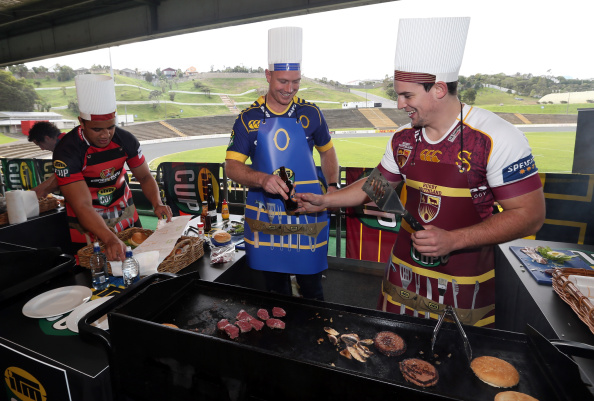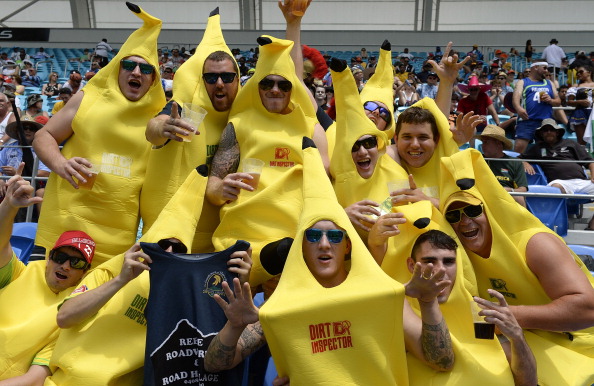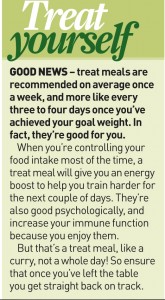How did you get on with Part 1 of England nutritionist Matt Lovell's step-by-step rugby diet plan? Here's Part 2...
Five a day won’t keep fat at bay
Forget five portions of fruit and veg a day – it should be nine a day. And of those nine servings, at least six should be vegetables, and only one to three fruit. Fruit is sweet, portable and convenient, so a common mistake is to eat lots of it. But remember fruit contains a lot of sugar, so isn’t nearly as beneficial as eating your greens.
Fruit shouldn’t be eaten as a dessert; when you’ve just had a main course and your blood-sugar levels are normal, the glucose and fructose (sugar) found in fruit will mostly turn to fat. So fruit is best eaten on its own, or with a protein snack such as nuts and seeds, yoghurt and cottage cheese, and preferably after exercising or doing manual work because fructose helps your liver glycogen levels to recover.
Berries are the best fruit as they have a high concentration of protective nutrients. Spices and herbs have similar properties, so use plenty of them.
Grain freeze
Think about the types of carbohydrates you’re eating, and when you’re eating them. Grains, and especially wheat, can hamper weight loss, and also encourage water retention in the body, making you feel bloated. Starchy carbohydrates such as bread, rice, pasta and potatoes should only be eaten following exercise, and if you really want to lose weight you should cut them out completely.
Fibrous carbohydrates (anything green or that grows above the ground such as broccoli, asparagus and cauliflower) can be eaten at any time. So if your typical day would involve you eating a wheat-based cereal for breakfast, a sandwich for lunch, pasta for dinner, and a couple of biscuits as a snack, think again. A large white pitta bread contains 60g of carbs, but to get that from asparagus you’d have to eat 2kg worth. If you go for the latter option, you feel fuller, lighter, healthier – because it contains more nutrients – and you’ll have more energy.
Slow and steady wins the race
If you eat too quickly, you’ll eat too much, and any extra glucose may be stored as fat due to high insulin levels. Even if you’re taking in the right foods, eating fast can stop you achieving the desired results, so use these tips to help you slow down.
Put less food on your plate; chew properly, and finish your mouthful before you put more food in; put your fork down between each mouthful; don’t eat while doing something else, such as watching TV, as you won’t notice how much you’re eating; be sociable at meal times, taking time over your meal with friends and family; stop eating when you’re no longer hungry; while preparing your meal, snack on some raw veg, or have soup as a starter, so that you’re drip-feeding your calories.
Chop and change
Eat according to what you’re going to be doing over the next three hours, or what you’ve just done. If athletes eat the same thing every day, their performance and recovery will be the same. If you’re going to be training hard, or have just trained hard, eat more than if you’re having a light training day or a day off.
You need to boost your metabolic rate by eating more protein, good fats and vegetables, while doing high-intensity, resistance-based exercise, such as interval training. A big mistake of all diets is to restrict your energy, putting the body into a catabolic state. In this state of breakdown you’ll lose muscle as well as fat and your metabolism will drop. People can’t stick to crash diets because they result in such low energy levels that they then binge-eat and undo all the hard work.
A common pitfall for people is failing to plan. A lack of support also makes it difficult for people to stick to a diet, and you see the best results when someone has adopted a new lifestyle with a friend or partner. So get your team-mates to support you, and your team will be topping the league table in no time.
Click here to see Part 1 to Matt Lovell’s step-by-step weight loss plan. Includes advice about portion sizes, when’s best to eat, and alcohol…








